#tavush
Text

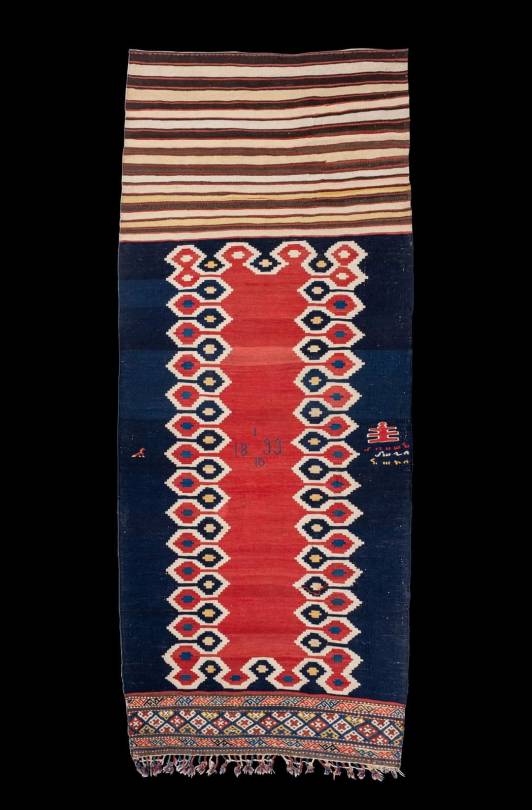
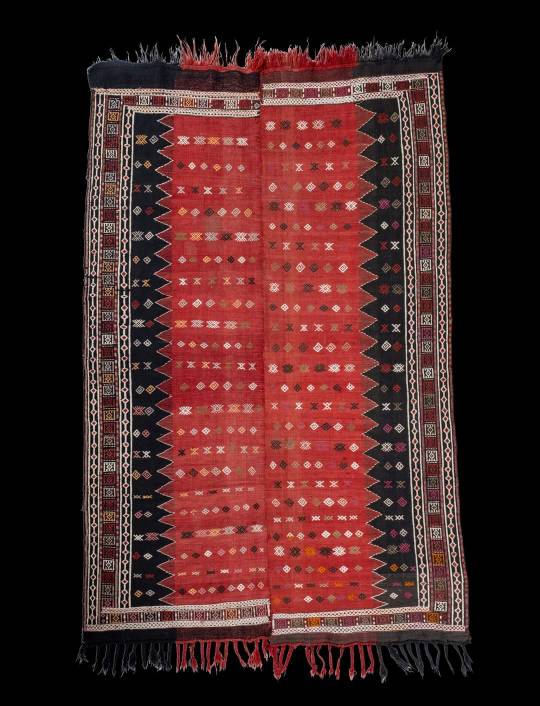
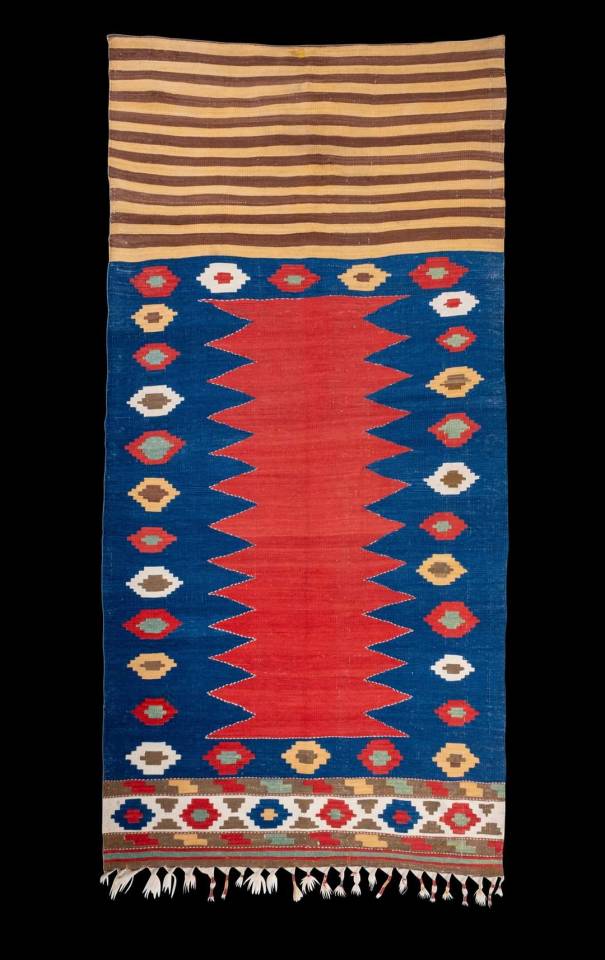
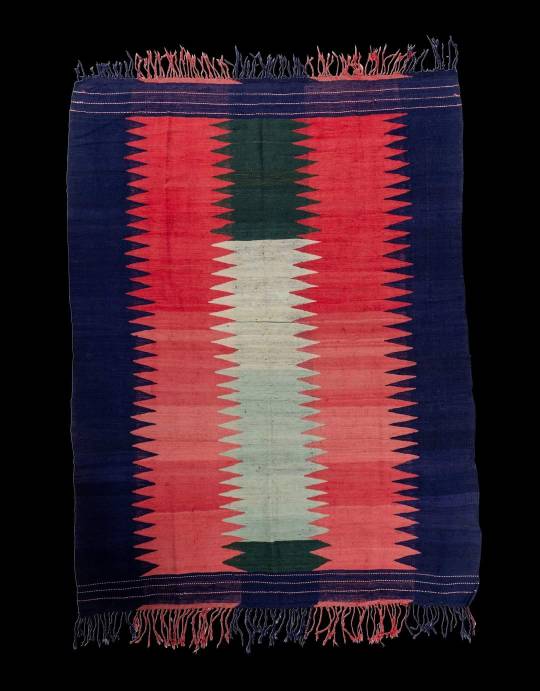
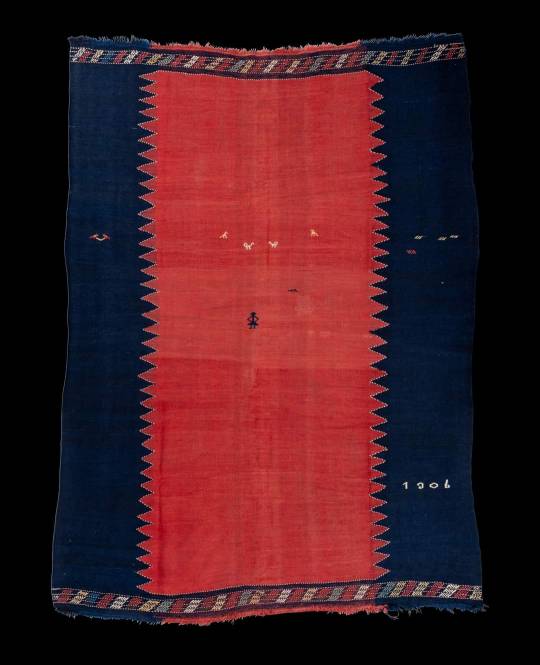
Antique rugs from Nothern Armenia, Nooter collection.
Armenian Rugs on Facebook.
502 notes
·
View notes
Text

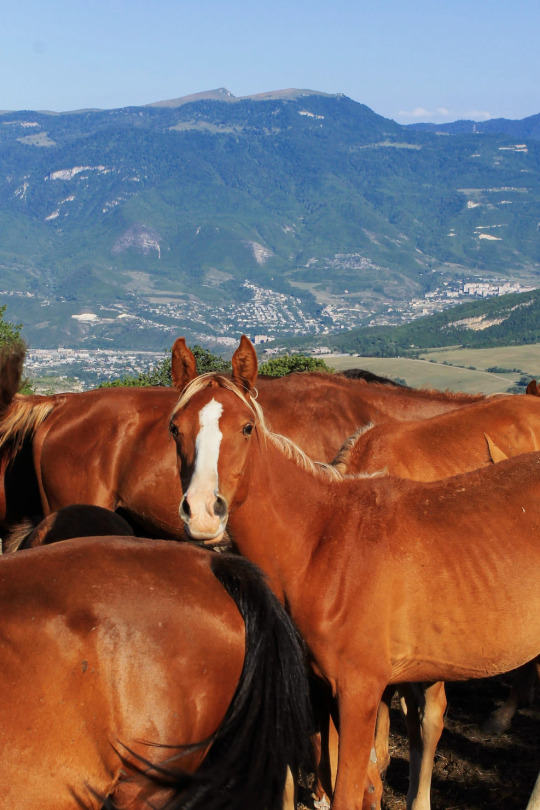
Tavush Province, Armenia
Kristina Kzhdryan
11 notes
·
View notes
Text

Reminds me of Game of Thrones for some reason.
Tavush, Armenia
47 notes
·
View notes
Video
youtube
Մանրամասների համար⬇️
📞099855845
🌐https://shorturl.at/bBF58
🔗https://kanachtun.com/
#youtube#am i dreaming#dreaming travel#living in my dream#my dreams#living#rest#relax#harmony#nature#forest#hotels#guest house#mountanis#memories#adventure#travel#kanach tun#yenokavan#tavush#armenia
0 notes
Text

Moss Agate | Idzhevanskoe, Ijevan, Tavush Province, Armenia
3K notes
·
View notes
Text
[News.am is Armenian Private Media]
The Ministry of Foreign Affairs (MFA) of Azerbaijan's demands eight "occupied" villages from Armenia—and in the form of an ultimatum. This demand is presented in a statement of the Azerbaijani MFA.[...]
it is about eight "enclave" villages in Tavush and Ararat Provinces of Armenia. During the first Nagorno-Karabakh war in the early 1990s, the former Soviet borders between independent Armenia and Azerbaijan were changed during the hostilities unleashed by Azerbaijan. As a result, now there are both Armenian and Azerbaijani enclaves; but Azerbaijan prefers to remain silent about the Armenian occupied territories.
[Anadolu Ajansi is Turkish State Media]
["]Armenia also refused to hand over eight Azerbaijani villages, which are still under occupation," said a statement by the Azerbaijani Foreign Ministry.
The statement was released on the occasion of Azerbaijan's Victory Day on Nov. 8, which celebrates Baku's victory in the 2020 Karabakh war. It [claimed] that despite its obligations, Armenia continued to provide military support to separatist forces in the Karabakh region amid peace talks.[...]
It added that "Armenia must finally recognize that there is no alternative to peace and cooperation in the region,"
7 Nov 23
128 notes
·
View notes
Photo

Armenia ( Tavush) - Azerbaijan border
23 notes
·
View notes
Text

Armenia. Tavush. 2013.
"Emma Arzumanyan is 75 years old. She picks fruit in the forest outside the small town of Ayrum where she lives. We came across Emma and her daughter picking berries on the edge of the forest. Emma looked very fragile in her big pale blue cardigan that had massive holes in the elbows (from catching on the thorns). She had scratches covering her hands and wrists from the thorns on the berry bushes. And when she stepped through the bushes to get nearer to the ripest berries, her flimsy long skirt caught on the bushes revealing more scratches on her ankles and legs. “I started picking fruit to earn money when my husband died. If I can sell my fruit at the roadside market, I will get 300 drams a kilo .. around 1, 000 drams for a full bucket. I get a small pension, but I don’t have another income. I live with my daughter in one room. I know that the processing plant will be opening next year and I’m hopeful it will help me with guaranteed sales and fixed prices.”
Cristina Garcia Rodero
#magnumphotos#magnum photos#photography#photojournalism#armenia#armenians#caucaus#Cristina Garcia Rodero#caucasian#kavkaz
39 notes
·
View notes
Text
https://www.reuters.com/world/asia-pacific/armenias-pm-says-he-must-return-disputed-areas-azerbaijan-or-face-war-tass-2024-03-19/
TBILISI, March 19 (Reuters) - Armenia could face a war with Azerbaijan if it does not compromise with Baku and return four Azerbaijani villages it has held since the early 1990s, Prime Minister Nikol Pashinyan said in a video published on Tuesday.
Pashinyan was speaking during a meeting on Monday with residents of border areas in northern Armenia's Tavush region, close to a string of deserted Azerbaijani villages that Yerevan has controlled since the early 1990s.
The four villages, which have been uninhabited for over 30 years, are of strategic value to Armenia as they straddle the main road between Yerevan and the Georgian border.
Azerbaijan has said the return of its lands, which also include several tiny enclaves entirely surrounded by Armenian territory, is a necessary precondition for a peace deal to end three decades of conflict over the region of Nagorno-Karabakh, which Baku's forces retook last September.
Russia's TASS state news agency quoted Pashinyan as telling residents in the video clip that was circulated by his government that failure to compromise over the disputed villages could lead to war with Azerbaijan "by the end of the week".
"I know how such a war would end," he added.
Yerevan suffered a major defeat last September when Baku's forces retook Nagorno-Karabakh in a lightning offensive, prompting almost all of that region's estimated 100,000 ethnic Armenians to flee to Armenia.
Though Karabakh is recognised internationally as Azerbaijani territory, the region's ethnic Armenians had enjoyed de facto independence from Baku since the war of the early 1990s.
PEACE TREATY
Baku and Yerevan have said they now want to sign a formal peace treaty, but talks have become bogged down in issues including demarcation of their 1,000 km (620 mile) shared border, which remains closed and heavily militarised.
Pashinyan has signalled in recent weeks that he is willing to return Azerbaijani land controlled by Armenia, and suggested rerouting Armenia's road network to avoid Azerbaijani territory.
Mainly Muslim Azerbaijan also continues to control areas internationally recognised as part of Christian Armenia.
Azeri President Ilham Aliyev said on Sunday his country was "closer than ever" to a peace with Armenia, in remarks made after holding talks with NATO Secretary-General Jens Stoltenberg in Baku.
Stoltenberg held talks on Tuesday with Pashinyan in Armenia, which is nominally a Russian ally though its relations with Moscow have deteriorated in recent months over what Yerevan says is Russia's failure to protect it from Azerbaijan.
As a result, Armenia has pivoted its foreign policy towards the West, to Moscow's chagrin, with senior officials suggesting it might one day apply for European Union membership.
In a statement posted on Tuesday on the Telegram messaging app, Russian Foreign Ministry spokeswoman Maria Zakharova suggested Yerevan's deepening ties with the West were the reason for Armenia having to make concessions to Azerbaijan.
2 notes
·
View notes
Note
If you have time, could you do Aulay or Tavush (for Pokemon teams)
Tavish’s team:



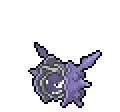
Au Kay’s team:




2 notes
·
View notes
Text

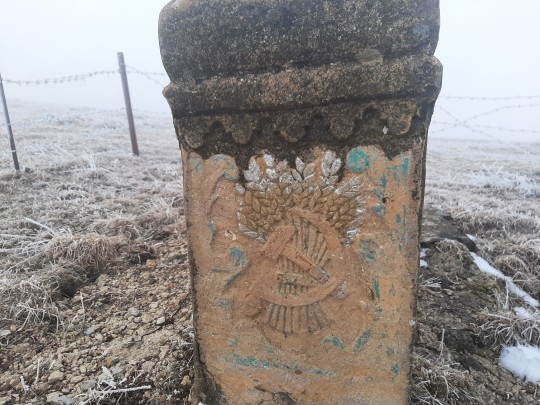
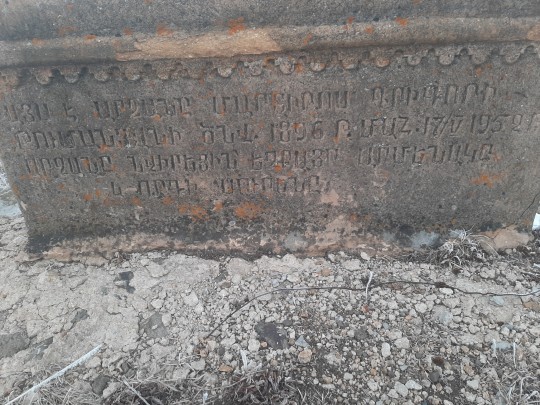

A Soviet era funerary momunemt in Tavush, Armenia.
Inscriptions: You gave your life in your immortal name, the organiser and founder of the collective farm, you had no complaints, you fell off a fast(?) horse and died.
This is the statue dedicated to Martiros Grigori Tumanyan, born in 1896, died on 17 May(?) 1952. The statue was donated by his brother Armenak and his son Suren.
Photos belong to me. Do not post elsewhere.
#this is presumably the place he fell down from the horse and died.#armenia#armenian#armenianblog#ussr#tavush#northern armenia#actually mine
203 notes
·
View notes
Text
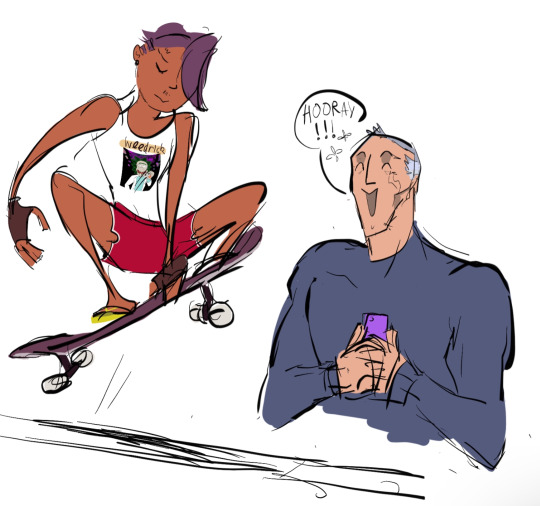
That video of the son skateboarding and the grandma’s recording it
323 notes
·
View notes
Text
Lilit Danielyan was born in Armenia in 1992, and both the First and Second Nagorno-Karabakh Wars took place in her lifetime. After the second war, the photographer traveled to Armenian villages and settlements along the country’s borders with Azerbaijan and Turkey to capture how the conflict was transforming rural life there. The photo series, which she titled “Along the Closed Borders,” took shape in 2021. Meduza is publishing these photographs and Danielyan’s commentary in the wake of Azerbaijan’s most recent military offensive on the unrecognized Artsakh Republic in Nagorno-Karabakh. The terms of the ceasefire forced Armenia to commit to withdrawing its remaining troops from the region and compelled the dissolution of Artsakh’s government.
I was born in Armenia during the First Nagorno-Karabakh War. Now I live in Portugal. As a child, I often visited the village where my grandmothers lived. I played in courtyards with the other neighborhood children, picked flowers, and climbed the mountains to look down at our village from above. There, beyond the mountains, was the closed border with Azerbaijan. On the other side of it was Artsvashen — my father’s home village, occupied by Azerbaijan in 1992, two days after I was born.
The Second Nagorno-Karabakh War broke out on September 27, 2020. It lasted 44 days, claiming thousands of lives. Even more people became refugees. After that war, I started to hear the words “border” and “border zone” everywhere: in the media and in conversations with my family.
In December 2022, Azerbaijan blocked the Lachin corridor, leaving residents of the Republic of Artsakh without food, gas, medical supplies, or basic necessities. And mere days ago, the Azerbaijani military attacked Stepanakert, the capital of Artsakh. Armenians began fleeing their homes, afraid of ethnic cleansing.

The landscape of Chambarak, Armenia. When talking about borders, locals point to the mountains.

The village of Vahan is located near my father’s hometown, Artsvashen, occupied by Azerbaijan in 1992. My father used to commute through Vahan every day on his way to work. He dreams of making the commute again someday and seeing his hometown one more time.
Children of Chinari climbing up to their favorite tree. The entire village is visible from here.
One day, I happened upon the Armenia Tree Project, a non-profit organization dedicated to planting trees across Armenia. I learned that in the village of Chinari in the Armenian Tavush Province (located near the border with Azerbaijan) there was a cemetery, along the side of which the Armenia Tree Project had planted young poplar trees. This cemetery is within sight of an Azerbaijani military post. The non-profit’s coordinator Alexander Mirzoyan said in an interview that after the recent war, Chinari residents were forced to bury relatives at night for fear of daytime gunfire from the Azerbaijani side. Young, still fragile poplars, planted in one long row, came to symbolize protection — a kind of shield for the cemetery. After learning about this project, I began to think about the meaning of borders.
When I came to Armenia after the Second Nagorno-Karabakh War, I made myself an itinerary: I would cross Armenia from its western border with Turkey to another border with Azerbaijan in the east of the country, making my way from Bagaran to Chinari and documenting life in Armenian villages along the closed borders.

Lilit Danielyan’s route

The road to Khoranashat, a 13th-century monastery in the Armenian village of Chinari. The monastery is located next to an Azerbaijani military post. People have been shot dead on this road.
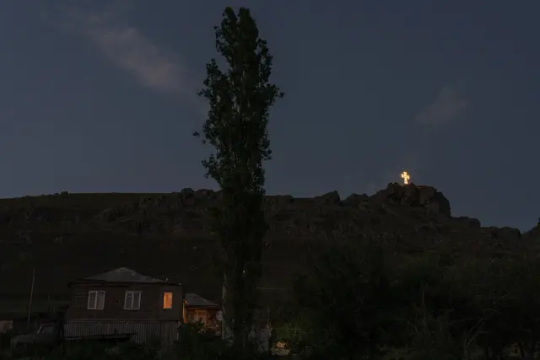
A cross in Chambarak, an Armenian border town. Many such crosses have appeared in recent decades, especially in rural areas. They are visible from the road and only glow at night. Some Chambarak residents say they deliberately drive past this cross before heading home.

Mery Danielyan lives in Chambarak. She is a social worker and elementary school teacher. While many young people leave the rural areas, Mery decided to stay in the village with her family.

A school in Aygedzor, Armenia. In the wake of the 2020 war, some schools near the border built additional walls to protect from possible shootings.

Inside a town school in Chambarak, Armenia.
While traveling, I didn’t meet a single family without dead relatives or acquaintances. Every conversation with locals invariably touched on the war. The family of my cousin, who worked as a doctor in the very epicenter of the war, talked about the horror of waiting for news. On my mother’s side of the family, a cousin died on the very last day of the war. Now, many of the survivors suffer from post-traumatic stress, and there aren’t enough psychologists or resources to help with their trauma.
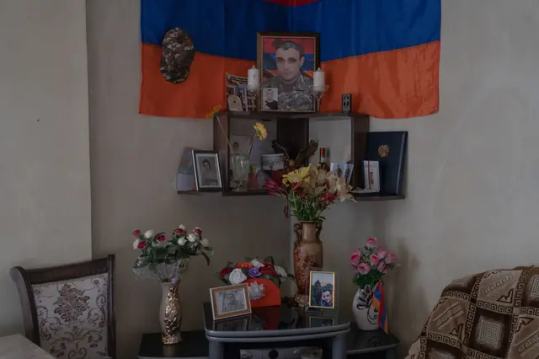
Ttujur, Armenia. During the 2020 war, many Armenian families lost friends and relatives. After the war, they began to organize memorials both in cemeteries and at home. Jirair “Jiro” Balyan was one of three children in his family. He died on the last day of the war. His family visits his grave often and brings fresh flowers for him to their living room. Jiro’s mother says she never closes the door to the room, afraid that she is leaving her child there alone.

Kamo is 60 years old. For 40 of those years, he worked as a shepherd, leaving home before dawn and returning shortly before sunset. Even though he is disabled, he goes to the mountains every day during the pasturing season. On one foggy day in the 1990s, Kamo accidentally crossed the Armenia–Azerbaijan border and was taken prisoner. Kamo said that before the First Nagorno-Karabakh War, he used to herd his cows and sheep together with Azeri shepherds. They often had lunch not far from each other. When Kamo was apprehended, one of the Azerbaijani shepherds recognized him. He spent a week tied up before he was finally released.

Chinari, Armenia. Neighborhood children playing together.
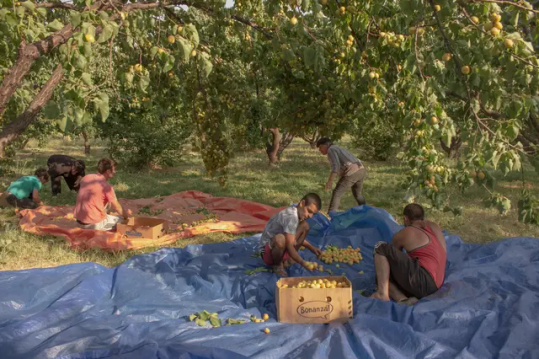
In the village of Bagaran, located right by the Turkish border, most families make a living selling fruit. The apricot season is short and labor-intensive. Locals pick and sort apricots for export to Russia. The remaining fruit is dried in the sun or used to make homemade vodka.

Residents of Ttujur, a village on the Armenia–Azerbaijan border, celebrate their neighbor’s return from the army. Military service in Armenia is mandatory for male citizens between the ages of 18 and 27. Families and neighbors will gather for a send-off meal before the young men leave for their two-year service. When they return, everyone gathers again. The celebration after the 2020 war was especially important to all families who had children serving in the army and fighting.
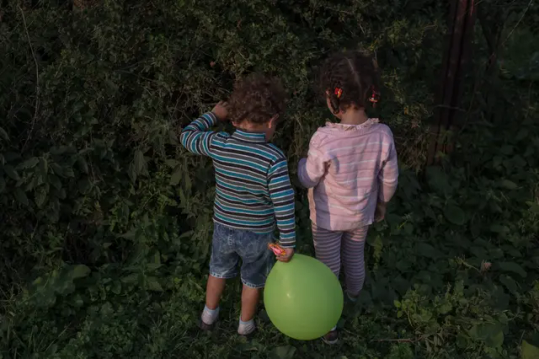
Ttujur, Armenia. Maneh and her brother Andranik search for ripe berries by the roadside close to their home.

Chinari, Armenia. A man helps his neighbors get drinking water for their home. Many people in rural areas live without reliable access to drinking water. Some have no running water at home at all. In many places, people draw water from springs. Neighbors often share with each other.

Chambarak, Armenia. Washed and processed wool dries in an attic. The next day, a neighbor will come over and help make it into a blanket. Most people in rural Armenia keep sheep and make blankets from their wool.
Living close to the border is cause for daily anxiety and worry. Even the youngest Chinari and Aygedzor residents feel it in one way or another. Cement fences are built around the schools and some of the windows are bricked up. Portraits of dead soldiers, most of them eighteen-year-old boys, hang in the hallways.
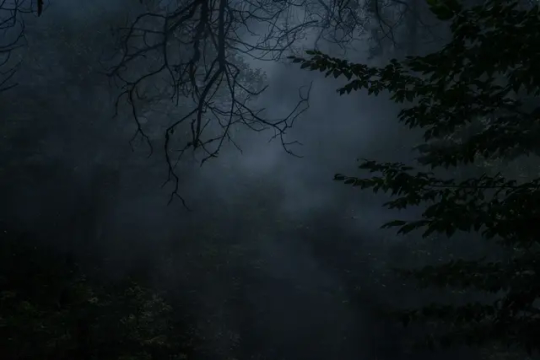

Aygedzor village, Tavush Province

Tavush Province, Armenia. Since the beginning of the Nagorno-Karabakh conflict, the road to the abandoned Khoranashat Monastery has become dangerous. The monastery is 500 meters from the Azerbaijani border. Many residents of the neighboring Chinari and Aygedzor villages haven’t been to Khoranashat since the 1990s. People who reach the monastery light candles and pray for their loved ones and for peace in the region.
Since the collapse of the Soviet Union and the closure of local factories, unemployment has been high in rural Armenia. A large percentage of the population lives in poverty. Men often have to leave to earn money in neighboring countries. After serving in the army, many young men often end up working at military posts because it’s one of the few paid jobs in the border regions.
The proximity of the border also affects local life. I’ve often seen neighbors support and care for one another, especially after the war. Men often help build memorials for families that lost a loved one.

Taking care of poultry and farm animals helps Levon bear the death of his son. Otherwise, he says, he simply wouldn’t be able to cope.

Aygedzor, Armenia. Still-life with apricot pits.

A cemetery in Chinari. After the war, villagers were afraid to bury their dead during the day. The cemetery is located within sight of an Azerbaijani military post. Armenia Tree Project volunteers and local residents planted poplar trees along the cemetery. When the trees mature, they will mark the location of the border.

View from an abandoned sanatorium.

Another cross, visible from the road leading to the border village of Ttujur.
As I am writing this today, the first refugees from Artsakh have begun arriving in Armenia. I reached out to my relatives and the people I photographed in the border regions in 2021. They responded almost immediately; I imagine them keeping their phones nearby, constantly reading the news.
Deeply upset and concerned about the state of Artsakh and Armenia, they talked about the threat of another war. “Things seem quiet right now on the borders, but it can change at any moment during these uncertain times,” said my aunt, who lives in a border village.
“We hurt, but we are trying to keep ourselves busy with daily chores,” my other aunt replied.
Nobody spoke of leaving. I hung up the phone and pictured the mountains in my grandmother’s village. It gives me a glimpse of hope as I anxiously wait for more news from home.
2 notes
·
View notes
Text

Tavush, Armenia
94 notes
·
View notes
Video
youtube
Արի՛ Կանաչ տուն՝ գտնելու քո խաղաղությունը✨
Դու արժանի ես💚
Մանրամասների համար⬇️
📞099855845
🌐https://shorturl.at/bBF58
🔗https://kanachtun.com/
#youtube#harmony#relax#mountains#life#view#nature#forest#to find harmony#you are worthy#herbal tea#save emotions#vibes#adventures#sunsets#traveler#new places#hotel in armenia#guest house#rest in armenia#Kanach Tun#Yenokavan#Tavush#Armenia
0 notes
